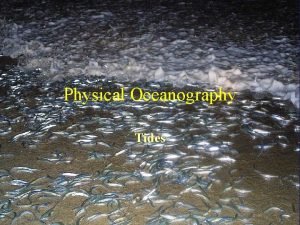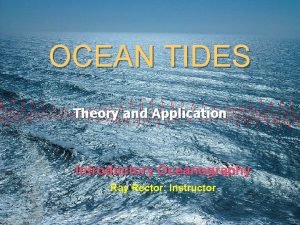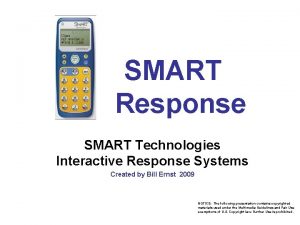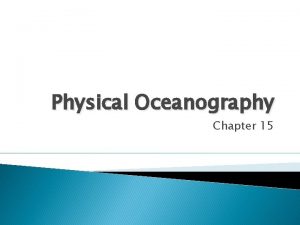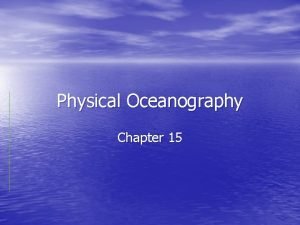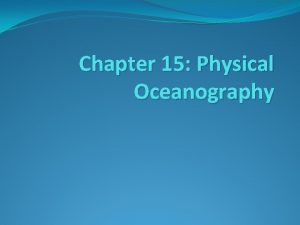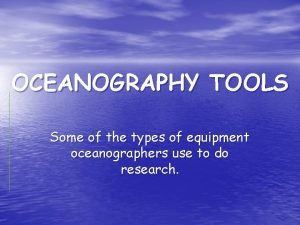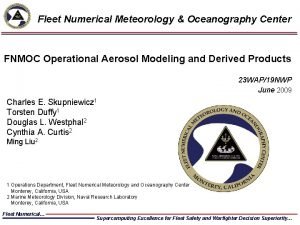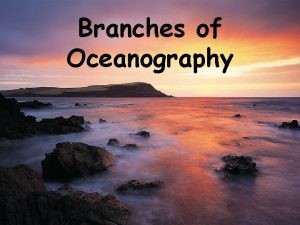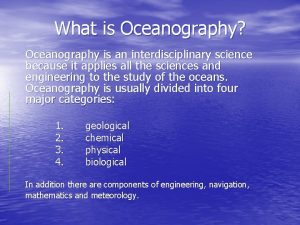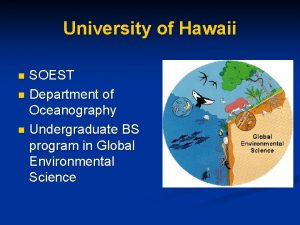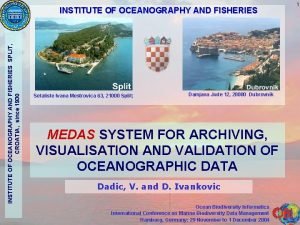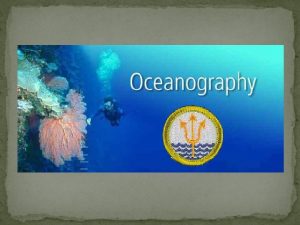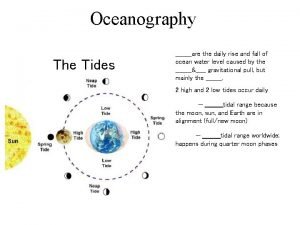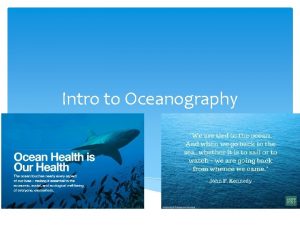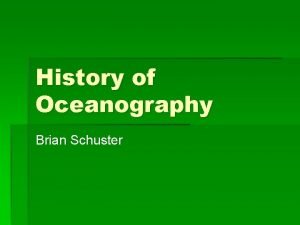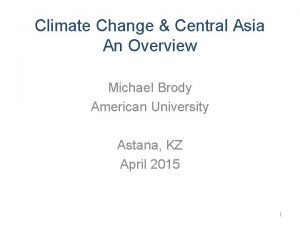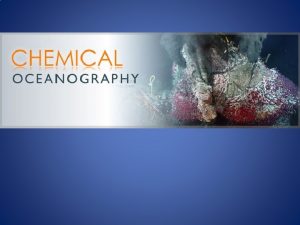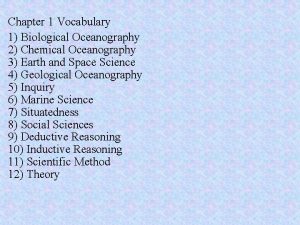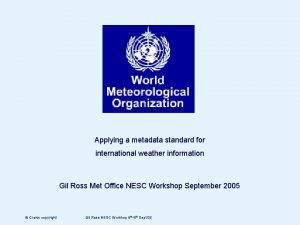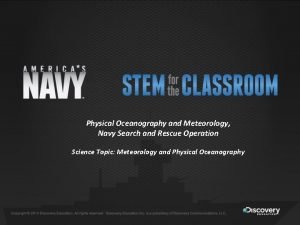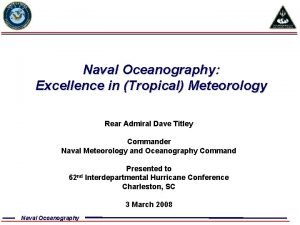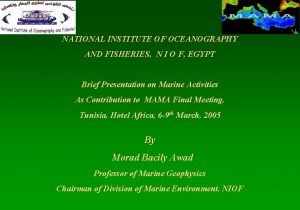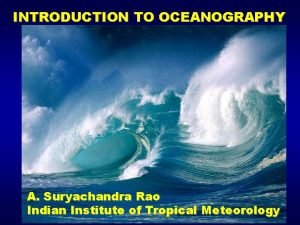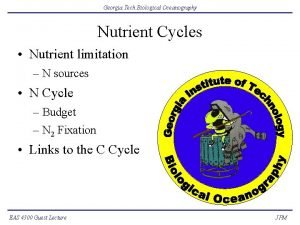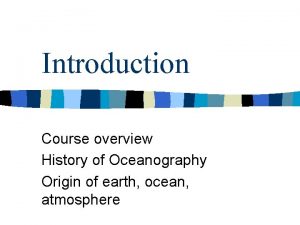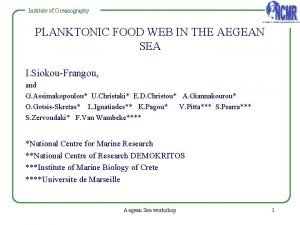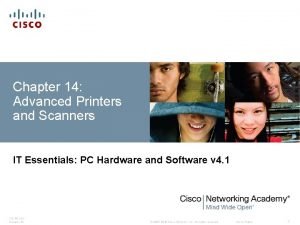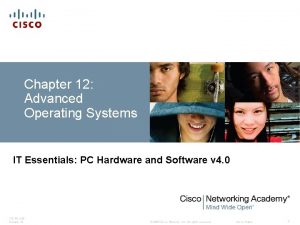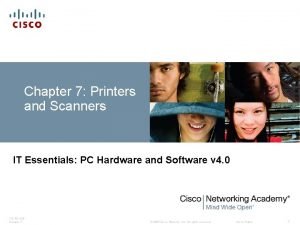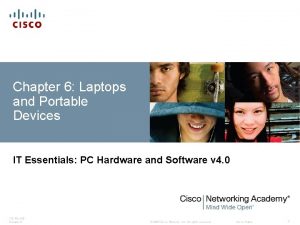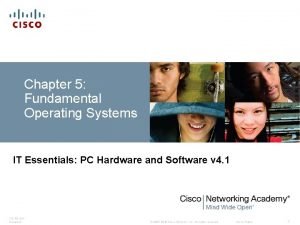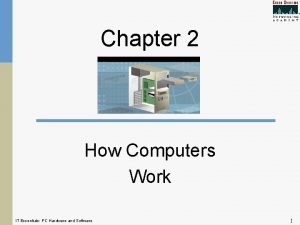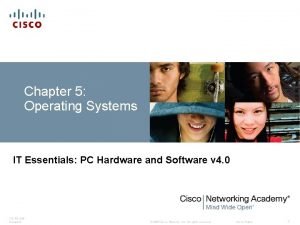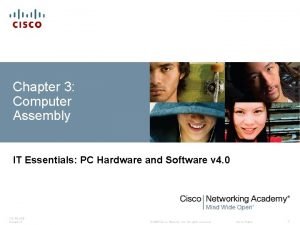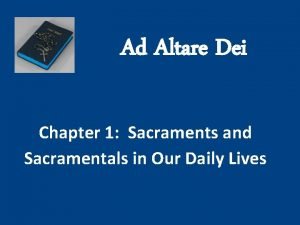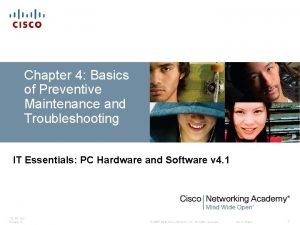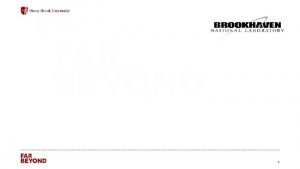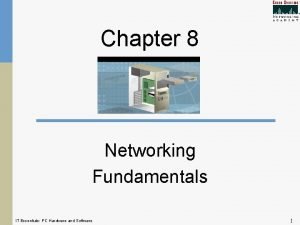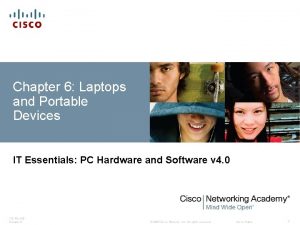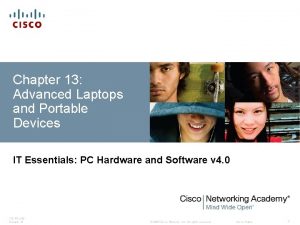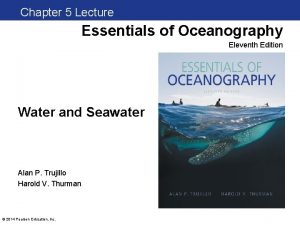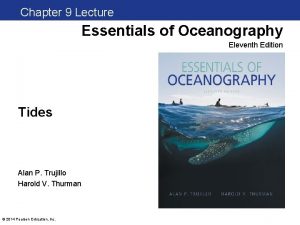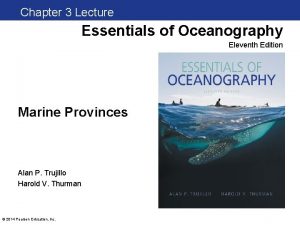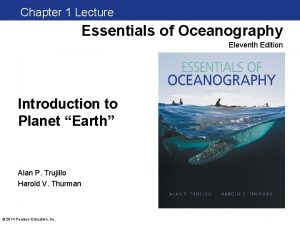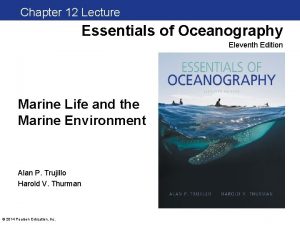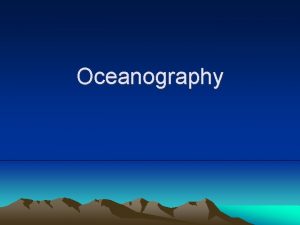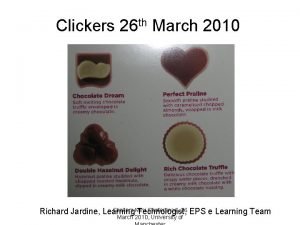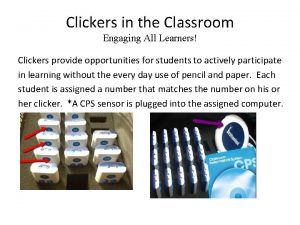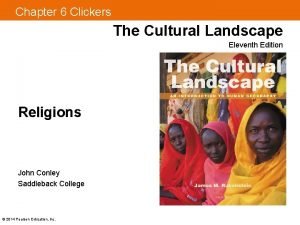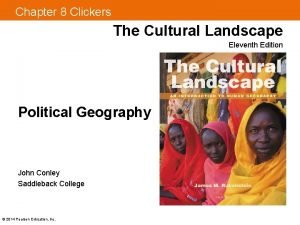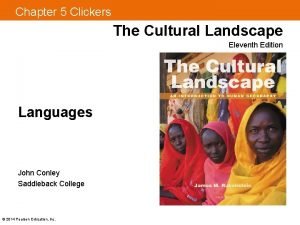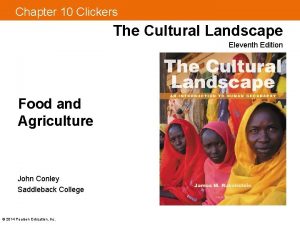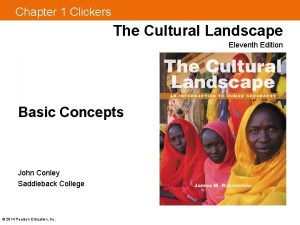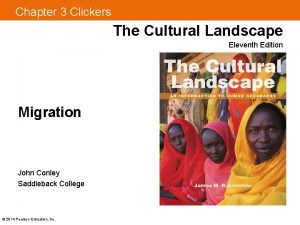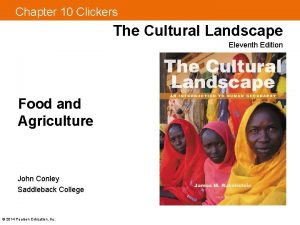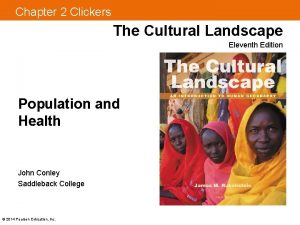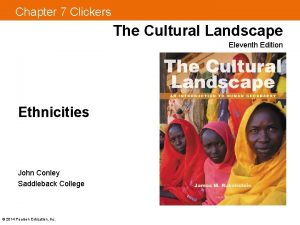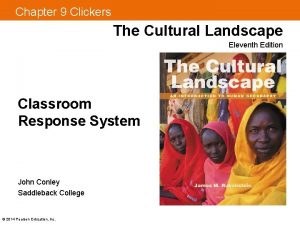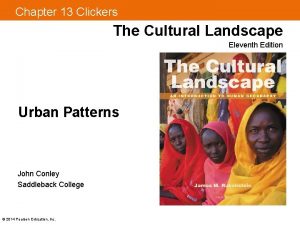Chapter 14 Clickers Lecture Essentials of Oceanography Eleventh






































































- Slides: 70

Chapter 14 Clickers Lecture Essentials of Oceanography Eleventh Edition Marine Sediments Alan P. Trujillo Harold V. Thurman © 2014 Pearson Education, Inc.

Chapter Overview • Marine sediments contain a record of Earth history. • Marine sediments provide many important resources. • Marine sediments have origins from a variety of sources. © 2014 Pearson Education, Inc.

Marine Sediments • Provide clues to Earth history – – – Marine organism distribution Ocean floor movements Ocean circulation patterns Climate change Global extinction events © 2014 Pearson Education, Inc.

Marine Sediments • Texture – size and shape of particles • Sediment origins – Worn rocks – Living organisms – Minerals dissolved in water – Outer space • Sediments lithify into sedimentary rock © 2014 Pearson Education, Inc.

Classification of Marine Sediments © 2014 Pearson Education, Inc.

Marine Sediment Collection • Early exploration used dredges. • Modern exploration – Cores – hollow steel tube collects sediment columns – Rotary drilling – collects deep ocean sediment cores © 2014 Pearson Education, Inc.

Drill Ship JOIDES Resolution © 2014 Pearson Education, Inc.

Marine Sediment Collection • National Science Foundation (NSF) – formed Joint Oceanographic Institutions for Deep Earth Sampling (JOIDES) in 1963 – Scripps Institution of Oceanography – Rosenstiel School of Atmospheric and Oceanic Studies – Lamont-Doherty Earth Observatory of Columbia University – Woods Hole Oceanographic Institution © 2014 Pearson Education, Inc.

Marine Sediment Collection • Deep Sea Drilling Project (DSDP) – 1968 – Glomar Challenger drilling ship – Core collection in deep water – Confirmed existence of sea floor spreading • Ocean floor age • Sediment thickness • Magnetic polarity © 2014 Pearson Education, Inc.

Marine Sediment Collection • DSDP became Ocean Drilling Project (ODP) in 1983 – JOIDES Resolution replaced Glomar Challenger • Integrated Ocean Drilling Program (IODP) – Replaced ODP in 2003 – Chikyu – new exploration vessel in 2007 • Expedition to Japan Trench after 2011 earthquake © 2014 Pearson Education, Inc.

Paleoceanography and Marine Sediments • Paleoceanography – study of how ocean, atmosphere, and land interactions have produced changes in ocean chemistry, circulation, biology, and climate – Marine sediments provide clues to past changes. © 2014 Pearson Education, Inc.

Marine Sediment Classification • • • Classified by origin Lithogenous – derived from land Biogenous – derived from organisms Hydrogenous or Authigenic – derived from water Cosmogenous – derived from outer space © 2014 Pearson Education, Inc.

Lithogenous Sediments • Eroded rock fragments from land • Also called terrigenous • Reflect composition of rock from which derived • Produced by weathering – Breaking of rocks into smaller pieces © 2014 Pearson Education, Inc.

Lithogenous Sediments • Small particles eroded and transported • Carried to ocean – Streams – Wind – Glaciers – Gravity • Greatest quantity around continental margins © 2014 Pearson Education, Inc.

Lithogenous Sediment Transport © 2014 Pearson Education, Inc.

Lithogenous Sediments • Reflect composition of rock from which derived • Coarser sediments closer to shore • Finer sediments farther from shore • Mainly mineral quartz (Si. O 2) © 2014 Pearson Education, Inc.

Lithogenous Quartz and Wind Transport © 2014 Pearson Education, Inc.

Grain Size • One of the most important sediment properties • Proportional to energy of transportation and deposition • Classified by Wentworth scale of grain size © 2014 Pearson Education, Inc.

Wentworth Scale of Grain Size © 2014 Pearson Education, Inc.

Texture and Environment • Texture indicates environmental energy – High energy (strong wave action) – larger particles – Low energy – smaller particles • Larger particles closer to shore © 2014 Pearson Education, Inc.

Sorting • • Measure of grain size uniformity Indicates selectivity of transportation process Well-sorted – all same size particle Poorly sorted – different size particles mixed together © 2014 Pearson Education, Inc.

Sediment Distribution • Neritic – Shallow-water deposits – Close to land – Dominantly lithogenous – Typically deposited quickly • Pelagic – Deeper-water deposits – Finer-grained sediments – Deposited slowly © 2014 Pearson Education, Inc.

Neritic Lithogenous Sediments • Beach deposits – Mainly wave-deposited quartz-rich sands • Continental shelf deposits – Relict sediments • Turbidite deposits – Graded bedding • Glacial deposits – High-latitude continental shelf – Currently forming by ice rafting © 2014 Pearson Education, Inc.

Pelagic Deposits • Fine-grained material • Accumulates slowly on deep ocean floor • Pelagic lithogenous sediment from – Volcanic ash (volcanic eruptions) – Wind-blown dust – Fine-grained material transported by deep ocean currents © 2014 Pearson Education, Inc.

Pelagic Deposits • Abyssal Clay – At least 70% clay sized particles from continents – Red from oxidized iron (Fe) – Abundant if other sediments absent © 2014 Pearson Education, Inc.

Biogenous Sediment • Hard remains of once-living organisms • Two major types: – Macroscopic • Visible to naked eye • Shells, bones, teeth – Microscopic • Tiny shells or tests • Biogenic ooze • Mainly algae and protozoans © 2014 Pearson Education, Inc.

Biogenous Sediment Composition • Two most common chemical compounds: – Calcium carbonate (Ca. CO 3) – Silica (Si. O 2 or Si. O 2·n. H 2 O) © 2014 Pearson Education, Inc.

Silica in Biogenous Sediments • Diatoms – Photosynthetic algae – Diatomaceous earth • Radiolarians – Protozoans – Use external food © 2014 Pearson Education, Inc.

Silica in Biogenous Sediments • Tests – shells of microscopic organisms • Tests from diatoms and radiolarians generate siliceous ooze. © 2014 Pearson Education, Inc.

Diatomaceous Earth • Siliceous ooze lithifies into diatomaceous earth. • Diatomaceous earth has many commercial uses. © 2014 Pearson Education, Inc.

Calcium Carbonate in Biogenic Sediments • Coccolithophores – Also called nannoplankton – Photosynthetic algae – Coccoliths – individual plates from dead organism – Rock chalk • Lithified coccolith-rich ooze © 2014 Pearson Education, Inc.

Calcium Carbonate in Biogenic Sediments • Foraminifera – Protozoans – Use external food – Calcareous ooze © 2014 Pearson Education, Inc.

Distribution of Biogenous Sediments • Depends on three processes: – Productivity • Number of organisms in surface water above ocean floor – Destruction • Skeletal remains (tests) dissolve in seawater at depth – Dilution • Deposition of other sediments decreases percentage of biogenous sediments © 2014 Pearson Education, Inc.

Pelagic Deposits • Siliceous ooze • Accumulates in areas of high productivity • Silica tests no longer dissolved by seawater when buried by other tests © 2014 Pearson Education, Inc.

Neritic Deposits • Dominated by lithogenous sediment, may contain biogenous sediment • Carbonate Deposits – Carbonate minerals containing CO 3 – Marine carbonates primarily limestone • Ca. CO 3 – Most limestones contain fossil shells • Suggests biogenous origin – Ancient marine carbonates constitute 25% of all sedimentary rocks on Earth. © 2014 Pearson Education, Inc.

Carbonate Deposits • Stromatolites – Fine layers of carbonate – Warm, shallow-ocean, high salinity – Cyanobacteria • Lived billions of years ago • Modern stromatolites live near Shark Bay, Australia © 2014 Pearson Education, Inc.

Calcareous Ooze • CCD – Calcite compensation depth – Depth where Ca. CO 3 readily dissolves – Rate of supply = rate at which the shells dissolve • Warm, shallow ocean saturated with calcium carbonate • Cool, deep ocean undersaturated with calcium carbonate – Lysocline – depth at which a significant amount of Ca. CO 3 begins to dissolve rapidly © 2014 Pearson Education, Inc.

Calcareous Ooze and the CCD © 2014 Pearson Education, Inc.

Calcareous Ooze and the CCD • Scarce calcareous ooze below 5000 meters (16, 400 feet) in modern ocean • Ancient calcareous oozes at greater depths if moved by sea floor spreading © 2014 Pearson Education, Inc.

Sea Floor Spreading and Sediment Accumulation © 2014 Pearson Education, Inc.

Distribution of Modern Calcium Carbonate Sediments © 2014 Pearson Education, Inc.

Environmental Conditions for Oozes © 2014 Pearson Education, Inc.

Hydrogenous Marine Sediments • Minerals precipitate directly from seawater – Manganese nodules – Phosphates – Carbonates – Metal sulfides • Small proportion of marine sediments • Distributed in diverse environments © 2014 Pearson Education, Inc.

Manganese Nodules • Fist-sized lumps of manganese, iron, and other metals • Very slow accumulation rates • Many commercial uses • Unsure why they are not buried by seafloor sediments © 2014 Pearson Education, Inc.

Manganese Nodules © 2014 Pearson Education, Inc.

Phosphates and Carbonates • Phosphates – Phosphorus-bearing – Occur beneath areas in surface ocean of very high biological productivity – Economically useful as fertilizer • Carbonates – Aragonite and calcite – Oolites © 2014 Pearson Education, Inc.

Metal Sulfides • Metal sulfides – Contain: • • • Iron Nickel Copper Zinc Silver Other metals – Associated with hydrothermal vents © 2014 Pearson Education, Inc.

Evaporites • Evaporites – Minerals that form when seawater evaporates – Restricted open ocean circulation – High evaporation rates – Halite (common table salt) and gypsum © 2014 Pearson Education, Inc.

Evaporiative Salts in Death Valley © 2014 Pearson Education, Inc.

Cosmogenous Marine Sediments • Macroscopic meteor debris • Microscopic iron-nickel and silicate spherules (small globular masses) – Tektites – Space dust • Overall, insignificant proportion of marine sediments © 2014 Pearson Education, Inc.

Marine Sediment Mixtures • Usually mixture of different sediment types • Typically one sediment type dominates in different areas of the sea floor. © 2014 Pearson Education, Inc.

Pelagic and Neritic Sediment Distribution • Neritic sediments cover about ¼ of the sea floor. • Pelagic sediments cover about ¾ of the sea floor. © 2014 Pearson Education, Inc.

Pelagic and Neritic Sediment Distribution • Distribution controlled by – Proximity to sources of lithogenous sediments – Productivity of microscopic marine organisms – Depth of water – Sea floor features © 2014 Pearson Education, Inc.

Pelagic Sediment Types © 2014 Pearson Education, Inc.

Sea Floor Sediments Represent Surface Ocean Conditions • Microscopic tests sink slowly from surface ocean to sea floor (10 – 50 years) • Tests could be moved horizontally • Most biogenous tests clump together in fecal pellets – Fecal pellets large enough to sink quickly (10– 15 days) © 2014 Pearson Education, Inc.

Worldwide Marine Sediment Thickness © 2014 Pearson Education, Inc.

Resources from Marine Sediments • Both mineral and organic resources • Not easily accessible – Technological challenges – High costs © 2014 Pearson Education, Inc.

Energy Resources • Petroleum – Ancient remains of microscopic organisms – More than 95% of economic value of oceanic nonliving resources • More than 30% of world’s oil from offshore resources • Future offshore exploration will be intense – Potential for oil spills © 2014 Pearson Education, Inc.

Offshore Drilling Platform © 2014 Pearson Education, Inc.

Energy Resources • Gas Hydrates – Also called clathrates – High pressures squeeze chilled water and gas into icelike solid – Methane hydrates most common © 2014 Pearson Education, Inc.

Energy Resources • Gas hydrates resemble ice but burn when lit • May form on sea floor – Sea floor methane supports rich community of organisms • Most deposits on continental shelf © 2014 Pearson Education, Inc.

Energy Resources • Release of sea floor methane may alter global climate. • Warmer waters may release more methane. • Methane release may cause underwater slope failure. – Tsunami hazard © 2014 Pearson Education, Inc.

Energy Resources • Gas hydrates may be largest store of usable energy. • Rapidly decompose at surface pressures and temperatures © 2014 Pearson Education, Inc.

Other Resources • Sand gravel – Aggregate in concrete – Some is mineral-rich © 2014 Pearson Education, Inc.

Other Resources • Evaporative salts – Gypsum – used in drywall – Halite – common table salt © 2014 Pearson Education, Inc.

Other Resources • Phosphorite – phosphate minerals – Fertilizer for plants – Found on continental shelf and slope © 2014 Pearson Education, Inc.

Other Resources • Manganese nodules – Lumps of metal – Contain manganese, iron, copper, nickel, cobalt – Economically useful © 2014 Pearson Education, Inc.

Distribution of Sea Floor Manganese Nodules © 2014 Pearson Education, Inc.

Other Resources • Rare Earth elements – Assortment of 17 metals – Used in technology, e. g. , cell phones, television screens, etc. • Sea floor may hold more rare Earth element deposits than found on land © 2014 Pearson Education, Inc.

End of CHAPTER 4 Marine Sediments © 2014 Pearson Education, Inc.
 Essentials of oceanography
Essentials of oceanography Neap tide spring tide
Neap tide spring tide Senteos
Senteos China classroom clickers
China classroom clickers Bhore committee
Bhore committee Eleventh 5 year plan
Eleventh 5 year plan Eleventh edition management
Eleventh edition management Management 11th edition by stephen p robbins
Management 11th edition by stephen p robbins Thfive
Thfive For his eleventh birthday elvis presley
For his eleventh birthday elvis presley Management eleventh edition
Management eleventh edition Management eleventh edition stephen p robbins
Management eleventh edition stephen p robbins Chapter 15 physical oceanography
Chapter 15 physical oceanography Chapter 15 physical oceanography
Chapter 15 physical oceanography Chapter 15 physical oceanography
Chapter 15 physical oceanography 01:640:244 lecture notes - lecture 15: plat, idah, farad
01:640:244 lecture notes - lecture 15: plat, idah, farad Dip net oceanography
Dip net oceanography Fleet numerical meteorology and oceanography center
Fleet numerical meteorology and oceanography center Branches of oceanography
Branches of oceanography Is oceanography an interdisciplinary science
Is oceanography an interdisciplinary science University of hawaii oceanography
University of hawaii oceanography сплит institute of oceanography and fisheries
сплит institute of oceanography and fisheries Four branches of oceanography
Four branches of oceanography Oceanography
Oceanography Kinds of tides
Kinds of tides Chemistry oceanography
Chemistry oceanography Polynesians oceanography
Polynesians oceanography Scripps institute of oceanography
Scripps institute of oceanography Chemistry oceanography
Chemistry oceanography Earth science chapter 1 vocabulary
Earth science chapter 1 vocabulary Chemistry oceanography
Chemistry oceanography Search by image
Search by image Oceanography
Oceanography Institute of oceanography and fisheries
Institute of oceanography and fisheries Oceanography
Oceanography Oceanography
Oceanography History of oceanography
History of oceanography Oceanography
Oceanography It essential chapter 8
It essential chapter 8 What are the ten essentials of a successful ffa chapter
What are the ten essentials of a successful ffa chapter It essential chapter 9
It essential chapter 9 It essentials chapter 14
It essentials chapter 14 Chapter 12 quiz it essentials
Chapter 12 quiz it essentials It essentials chapter 11
It essentials chapter 11 Business essentials 12th edition chapter 1
Business essentials 12th edition chapter 1 Marketing essentials chapter 38
Marketing essentials chapter 38 Marketing essentials chapter 13
Marketing essentials chapter 13 Form utility
Form utility It essential chapter 5
It essential chapter 5 It essentials chapter 3
It essentials chapter 3 It essentials chapter 11
It essentials chapter 11 Essentials of social media marketing chapter 9 quiz
Essentials of social media marketing chapter 9 quiz It essentials chapter 7
It essentials chapter 7 It essentials chapter 6
It essentials chapter 6 It essentials chapter 5
It essentials chapter 5 It essentials chapter 4
It essentials chapter 4 Math is the foundation of the kitchen and the back office
Math is the foundation of the kitchen and the back office It essentials chapter 2
It essentials chapter 2 It essentials chapter 5
It essentials chapter 5 It essentials chapter 3
It essentials chapter 3 It essentials chapter 10
It essentials chapter 10 It essentials chapter 10
It essentials chapter 10 Ad altare dei answers
Ad altare dei answers Marketing essentials chapter 2
Marketing essentials chapter 2 Preventive maintenance and troubleshooting
Preventive maintenance and troubleshooting It essentials chapter 7
It essentials chapter 7 What are the ten essentials of a successful ffa chapter
What are the ten essentials of a successful ffa chapter What copper cored cable is surrounded by a heavy shielding
What copper cored cable is surrounded by a heavy shielding It essentials chapter 6
It essentials chapter 6 _______is considered as moist method of cooking.
_______is considered as moist method of cooking. It essentials chapter 13
It essentials chapter 13
